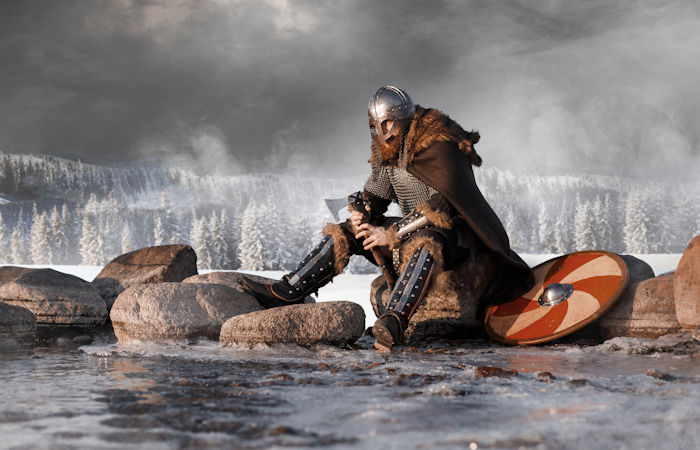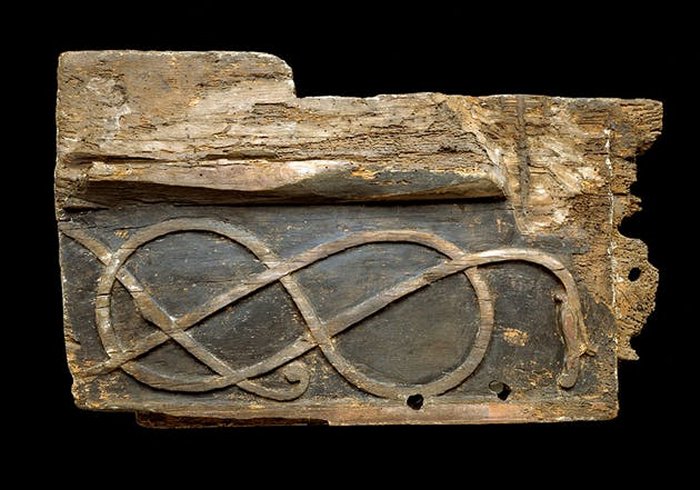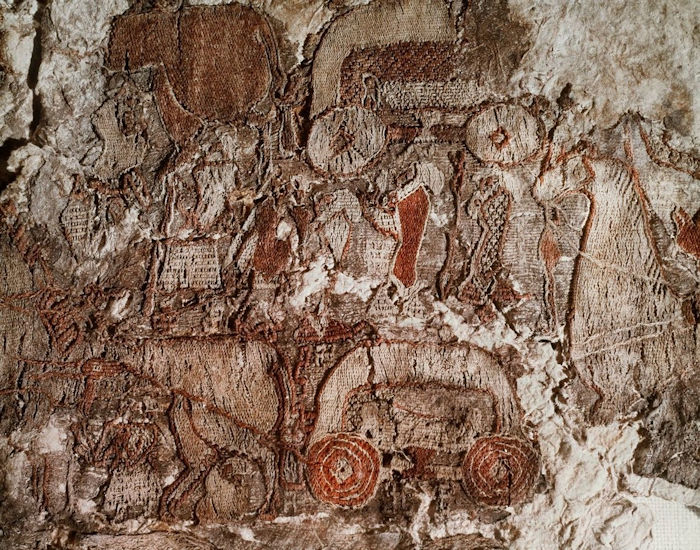The Oseberg Tapestry And Other Artifacts Show Intense Colors Were A Viking Symbol Of Status And Wealth
Ellen Lloyd - AncientPages.com - If you were a Viking warrior, you didn't paint your shield with just any color. Picking the right color was not a matter of taste. It was a decision based on careful selection because the stain revealed a Viking's status and wealth.
Credit: Adobe Stock: Fotokvadrat
Rich Vikings liked showing off using particular colors to symbolize their high societal status. Based on old paint remnants, a Danish chemist and a conservator have managed to recreate a palette of 17 magnificent colors used by the Vikings to emphasize their high status.
Intense colors were popular because they were rare and symbolized status.
Chemist Mads Christian Christensen and conservator Line Bregnhøi from the National Museum in Copenhagen examined a piece of wood from a church built in Hørning in Denmark around 1060. After so many years, the colors were not visible to the naked eye, so chemical analyses were required to recreate them.
Red And Yellow Were A Viking Symbol Of Status And Wealth
The red and yellow shades are derived from minerals not found in Denmark but in Spain and Turkey, among others.
Hørningplankan, a piece of wood examine to discover the importance of Viking colors. Credit: National Museum of Copenhagen
The mineral arsenic sulfide is used to produce yellow colors and can be obtained in countries like Germany and Turkey. The red color is made from cinnabar, which comes from Spain. Researchers think such minerals must have been expensive because they had to be transported to Scandinavia. Colors like red and yellow were only used by rich people who could afford them. The importation of expensive minerals must have been a lucrative business.
Because of the cost, it's unlikely more than minor details were highlighted with these colors.
The seventeen colors from the Viking era. Credit: National Museum Of Copenhagen
Researchers have so far identified 17 colors used by Vikings, and they hope they can discover more shortly. It's an important discovery because it gives us a better understanding of the Viking society.
Scientists have also learned plenty about the importance of colors from artifacts discovered in Oseberg's burial in Norway.
"The magnificent Oseberg ship was used as a burial ship for two Viking women who died in 834. A burial chamber was dug right behind the ship's mast. The walls were decorated with fantastic woven tapestries, and the dead woman lay on a raised bed.
The women had several burial gifts with them. These included clothes, shoes and combs, ship equipment, kitchen equipment, farm equipment, three ornate sleds, five carved animal heads, five beds, and two tents. There were fifteen horses, six dogs, and two small cows. A remarkable collection of wooden and textile artifacts was left behind, and the colors were striking.
The Oseberg tapestry is poorly preserved, but it is clear that it was a long, narrow (20–23 centimeters wide) strip that probably was meant to hang on a wall. It is made from wool dyed in different colors, mainly red, yellow, and black.
A fragment of a tapestry from the Oseberg grave in Vestfold, Norway. Credit: Erik I. Johnsen/Kulturhistorisk museum - CC BY-SA 2.0
The Oseberg tapestry portrays a procession of two rows of horses with knotted tails. Three of the horses pull carts, one containing two people, apparently women. Scholars have speculated whether they represent the two women buried in the Oseberg burial (with a cart among their grave goods) and whether the tapestry was specially made to portray the burial procession. The procession in the tapestry also features a large number of men and women walking.
The women wear long dresses with trains and cloaks, and some carry spears like many men. Their hair appears to be stuffed into bulging headdresses.
In their attire, the women on the Oseberg tapestry are reminiscent of the valkyries welcoming slain warriors to Valhalla, as portrayed on the Gotland picture stones. On these stones, many women do not have their hair hidden by headdresses but have let it down, as Ermengard is reported to have done when Earl Ragnvald visited her in Narbonne.
The valkyries of the picture stones serve food and drink to the dead warriors, and they let their hair down, which may suggest sexual availability. Some women portrayed on picture stones hold drinking horns in their hands, as does a small silver figure of a woman found in Birka; they have been interpreted as valkyries serving drink to dead warriors arriving at Valhalla. The warriors typically arrive by horse. Sometimes, they ride a horse with eight legs, suggesting they are so important that the ruler of Valhalla, Odin, has sent his eight-legged horse, Sleipner, to pick them up. Such picture stones often depict ships." 1
These discoveries and studies are valuable as they give us a better idea of how Vikings decorated their objects and perceived different colors.
Written by - Ellen Lloyd – AncientPages.com
Updated on December 4, 2023
Copyright © AncientPages.com All rights reserved. This material may not be published, broadcast, rewritten or redistributed in whole or part without the express written permission of AncientPages.com
Expand for referencesMore From Ancient Pages
-
 Deciphered Ancient Tablet May Depict Biblical Tower Of Babel – New Evidence
Archaeology | May 9, 2017
Deciphered Ancient Tablet May Depict Biblical Tower Of Babel – New Evidence
Archaeology | May 9, 2017 -
 Ancient DNA Reveals Some Northern Europeans Came From Siberia
Archaeology | May 13, 2019
Ancient DNA Reveals Some Northern Europeans Came From Siberia
Archaeology | May 13, 2019 -
 Stolen Artifacts Returned To Pompeii – Believed To Be Cursed -They Brought Misfortunes To A Woman And Her Family
Artifacts | Oct 13, 2020
Stolen Artifacts Returned To Pompeii – Believed To Be Cursed -They Brought Misfortunes To A Woman And Her Family
Artifacts | Oct 13, 2020 -
 York’s Thriving Medieval Jewish Community – New Study
Archaeology | Aug 22, 2023
York’s Thriving Medieval Jewish Community – New Study
Archaeology | Aug 22, 2023 -
 Aaru – Field Of Reeds: Kingdom Of Osiris Was The Ancient Egyptian Paradise
Myths & Legends | Feb 29, 2024
Aaru – Field Of Reeds: Kingdom Of Osiris Was The Ancient Egyptian Paradise
Myths & Legends | Feb 29, 2024 -
 Hidden Connection Between The Zodiac, Ancient Egypt, Freemasonry And Christianity
Ancient Mysteries | Aug 14, 2018
Hidden Connection Between The Zodiac, Ancient Egypt, Freemasonry And Christianity
Ancient Mysteries | Aug 14, 2018 -
 Unas (Unis): First Pharaoh Who Decorated His Burial Chamber With Pyramid Texts
Featured Stories | Jun 3, 2021
Unas (Unis): First Pharaoh Who Decorated His Burial Chamber With Pyramid Texts
Featured Stories | Jun 3, 2021 -
 Study Of Ancient Skulls Sheds Light On Human Interbreeding With Neandertals
Archaeology | Aug 23, 2022
Study Of Ancient Skulls Sheds Light On Human Interbreeding With Neandertals
Archaeology | Aug 23, 2022 -
 Unknown Prehistoric Henge Site Detected Near Famous Newgrange In Ireland’s East Coast
Archaeology | Jul 13, 2018
Unknown Prehistoric Henge Site Detected Near Famous Newgrange In Ireland’s East Coast
Archaeology | Jul 13, 2018 -
 Surprising Discovery Of Box Filled With Neanderthal Bones From Cova Simanya Donated To Museum
Archaeology | Sep 21, 2023
Surprising Discovery Of Box Filled With Neanderthal Bones From Cova Simanya Donated To Museum
Archaeology | Sep 21, 2023 -
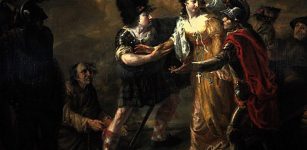 On This Day In History: Mary Queen Of Scots Was Forced To Abdicate – On July 24, 1567
News | Jul 24, 2016
On This Day In History: Mary Queen Of Scots Was Forced To Abdicate – On July 24, 1567
News | Jul 24, 2016 -
 Ancient DNA Of Segorbe Giant Reveals A Brutal Event In Medieval Spain
News | Sep 26, 2021
Ancient DNA Of Segorbe Giant Reveals A Brutal Event In Medieval Spain
News | Sep 26, 2021 -
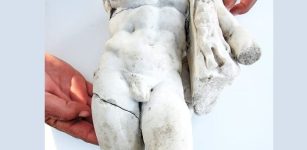 Fragment Of A Fine Marble Statuette Of Heracles Found In Jezreel Valley, Israel
Archaeology | May 24, 2023
Fragment Of A Fine Marble Statuette Of Heracles Found In Jezreel Valley, Israel
Archaeology | May 24, 2023 -
 Knowledge Of Secret Ancient Underground Civilization Revealed By Maya Priests
Ancient Mysteries | Nov 1, 2018
Knowledge Of Secret Ancient Underground Civilization Revealed By Maya Priests
Ancient Mysteries | Nov 1, 2018 -
 2,250-Year-Old Iron Age Settlement Discovered Near Upton-Upon-Severn
Archaeology | Jan 4, 2022
2,250-Year-Old Iron Age Settlement Discovered Near Upton-Upon-Severn
Archaeology | Jan 4, 2022 -
 Precious Lost Ancient Book Of Wisdom Could Solve Biblical Mysteries
Ancient Mysteries | Nov 26, 2018
Precious Lost Ancient Book Of Wisdom Could Solve Biblical Mysteries
Ancient Mysteries | Nov 26, 2018 -
 Gigantic Unfinished Stone Structures Cut With Amazing Stone-Working Techniques
Civilizations | Sep 21, 2015
Gigantic Unfinished Stone Structures Cut With Amazing Stone-Working Techniques
Civilizations | Sep 21, 2015 -
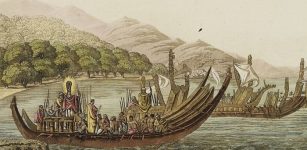 Stone Artifacts Reveal Long-Distance Voyaging Among Pacific Islands During The Last Millennium – New Study
Archaeology | Apr 21, 2023
Stone Artifacts Reveal Long-Distance Voyaging Among Pacific Islands During The Last Millennium – New Study
Archaeology | Apr 21, 2023 -
 Pyramid Of The Moon At Teotihuacán – Underground Tunnel And Chamber Found
Archaeology | Oct 29, 2018
Pyramid Of The Moon At Teotihuacán – Underground Tunnel And Chamber Found
Archaeology | Oct 29, 2018 -
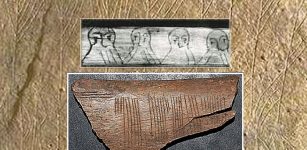 Mysterious Viking Code Jötunvillur Deciphered By Norwegian Researcher
News | Feb 24, 2014
Mysterious Viking Code Jötunvillur Deciphered By Norwegian Researcher
News | Feb 24, 2014

